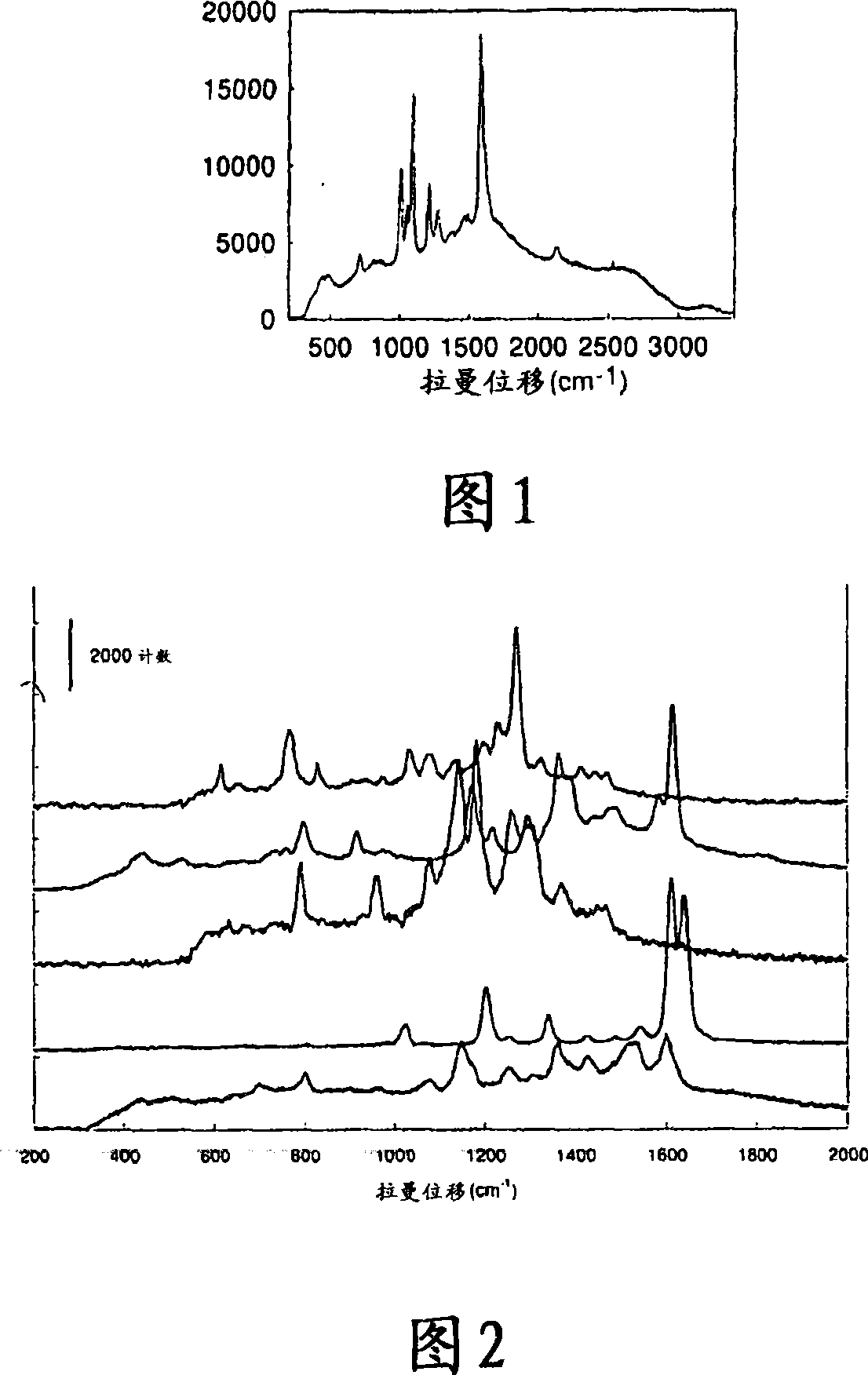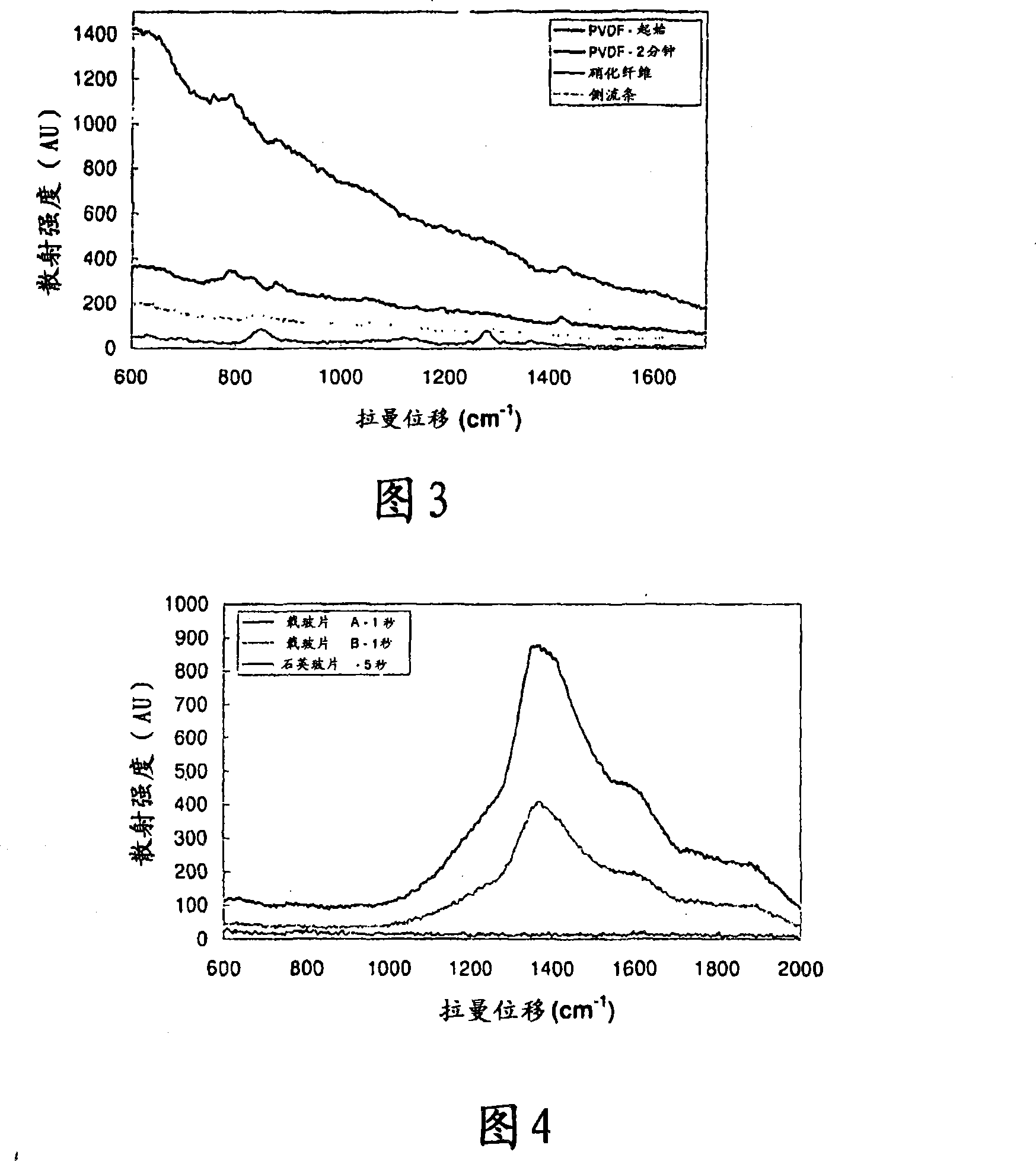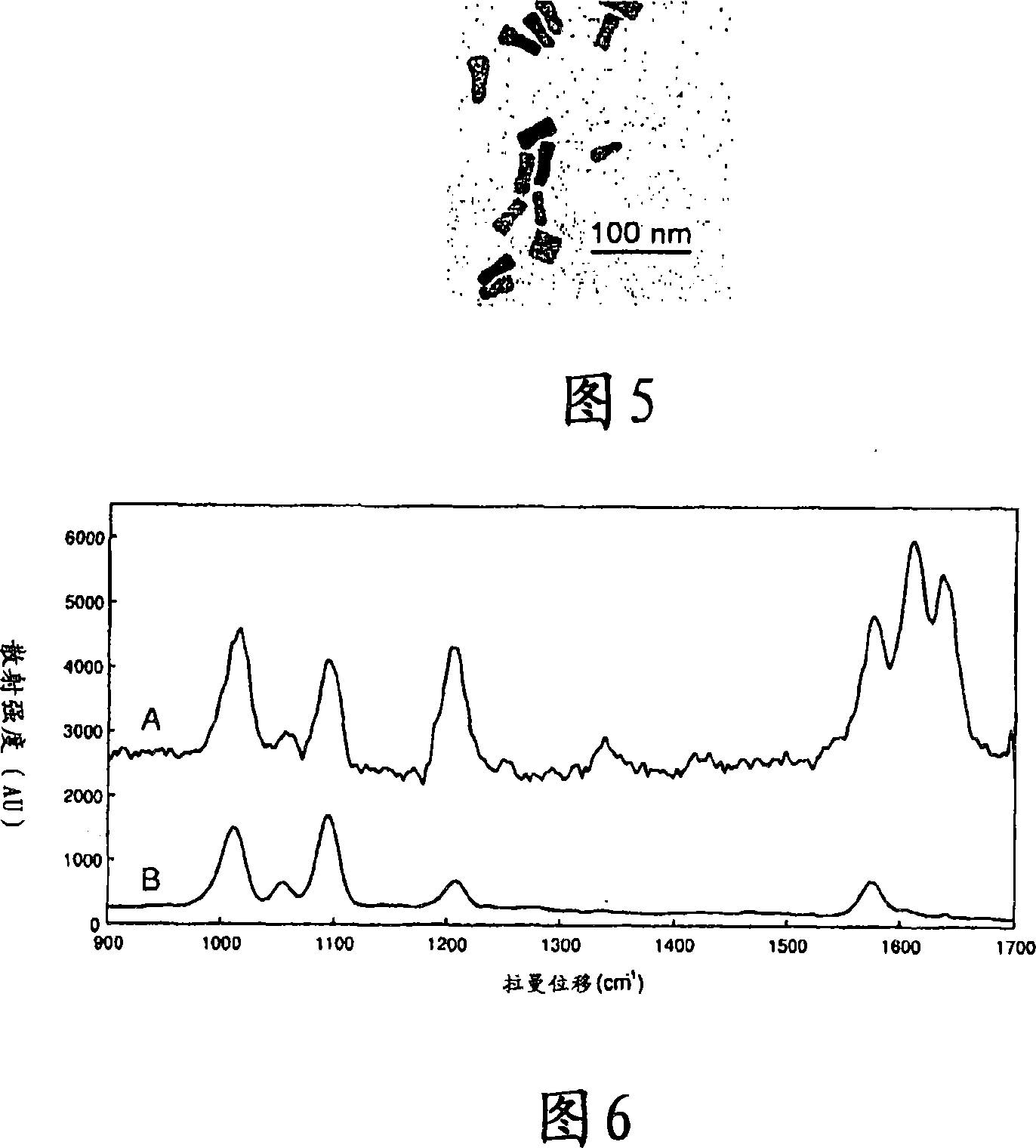Surface enhanced spectrometry-active composite nanoparticles
A nanoparticle, metal nanoparticle technology, applied in the fields of nanotechnology, nanotechnology, nanotechnology for materials and surface science, and can solve problems such as limited application and extremely weak Raman
- Summary
- Abstract
- Description
- Claims
- Application Information
AI Technical Summary
Problems solved by technology
Method used
Image
Examples
Embodiment 1
[0278] A typical synthesis of ~45 nm diameter Au colloids using a combination of sodium borohydride, sodium citrate and hydroxyamide hydrochloride is described. Wash all glassware with aqua regia and rinse thoroughly with 18 MΩ water. Reactions were performed in a cold room. Prepare 0.01% (w / w) HAuCl 4 ·3H 2 Aqueous solution of O, 8% (w / w) solution of sodium citrate dihydrate in 0.01N NaOH, 10 -4 % sodium borohydride in 0.01 N NaOH and 400 mM hydroxyamide hydrochloride in water. A mixture of citric acid and borohydride solution was then prepared by combining 1 mL of sodium citrate solution with 100 μl of sodium borohydride solution and 500 μl of 0.01N NaOH. After preparing this mixture, inject 200 μl of the hydroxyamide solution into 100 mL of HAuCl in a 250 mL Erlenmeyer flask 4 solution and stirred briefly. After 20 min, a borohydride / citrate mixture such as rapidly stirred HAuCl 4 and hydroxyamide solution. Best results were obtained when injecting in the mid-range ...
Embodiment 2
[0280] Preparation of gold nanoparticles. Prepared in H 2 1% or 2% concentration (w / v) of HauCl in O 4 ·3H 2 O stock solution. These solutions were filtered through a 0.2 μm membrane, after which they were placed in a cold room. Additionally, the bottles containing these stock solutions are generally covered with aluminum foil to reduce exposure to light. Typically the following solutions are prepared:
[0281] 1. In H 2 1.0 L 0.02% HauCl in O 4 .
[0282] 2.5 mL of 32% (w / v) sodium citrate dehydrate in 0.01N NaOH.
[0283] 3.10mL 1.6M in H 2 Hydroxyamide hydrochloride in O.
[0284] 4. 10 mL of 4% (w / v) NaBH in 1.0 N NaOH prepared by diluting the stock solution 4 .
[0285] All reactions were performed in a cold room after the solutions were brought to room temperature. HauCl 4 The solution was placed in a 2L round bottom flask and a glass stir bar with a Teflon paddle was inserted into the flask to provide stirring. Add 1.0 mL of the hydroxyamide solution to t...
Embodiment 3
[0287] SERS spectra of SACN labeled with 4-mercaptopyridine (4-MP) and trans-4,4′-bis(pyridyl)ethylene (BPE).
[0288] Materials: Water used for all preparations was 18.2 MΩ and was distilled by a Barnstead Nano Purity System. 3-Aminopropyltrimethoxysilane (APTMS), HAuCl 4 ·3H 2 O, trisodium citrate dihydrate, sodium hydroxide, sodium borohydride, hydroxyamide hydrochloride, trans-1,2-bis(4-pyridyl)ethylene (BPE), 4-mercaptopyridine, silicic acid Sodium, tetraethylorthosilicate (TEOS), ethanol and 2.0 M ammonia in ethanol were obtained from Sigma-Aldrich. BPE was recrystallized before use.
[0289] Colloid preparation: by HAuCl 4 ·3H 2 O to prepare 35nm colloidal Au. As sodium borohydride in 0.001N NaOH 10 -2 % solution, an aqueous solution of 4% sodium citrate and 400 mM hydroxyamide hydrochloride was prepared immediately prior to synthesis. Aliquot 300 μl of this borohydride solution with 500 μl citrate and 350 μl hydroxyamide and immediately inject 200 mL 0.01% HAuC...
PUM
| Property | Measurement | Unit |
|---|---|---|
| pore size | aaaaa | aaaaa |
| diameter | aaaaa | aaaaa |
| diameter | aaaaa | aaaaa |
Abstract
Description
Claims
Application Information
 Login to View More
Login to View More - R&D
- Intellectual Property
- Life Sciences
- Materials
- Tech Scout
- Unparalleled Data Quality
- Higher Quality Content
- 60% Fewer Hallucinations
Browse by: Latest US Patents, China's latest patents, Technical Efficacy Thesaurus, Application Domain, Technology Topic, Popular Technical Reports.
© 2025 PatSnap. All rights reserved.Legal|Privacy policy|Modern Slavery Act Transparency Statement|Sitemap|About US| Contact US: help@patsnap.com



